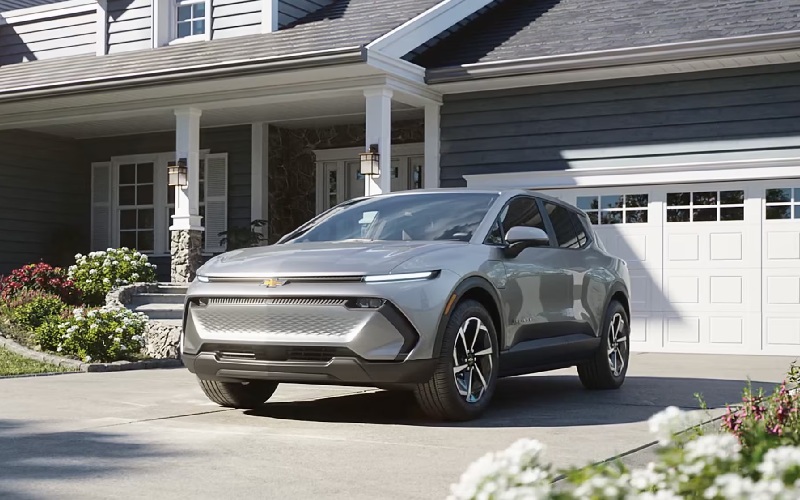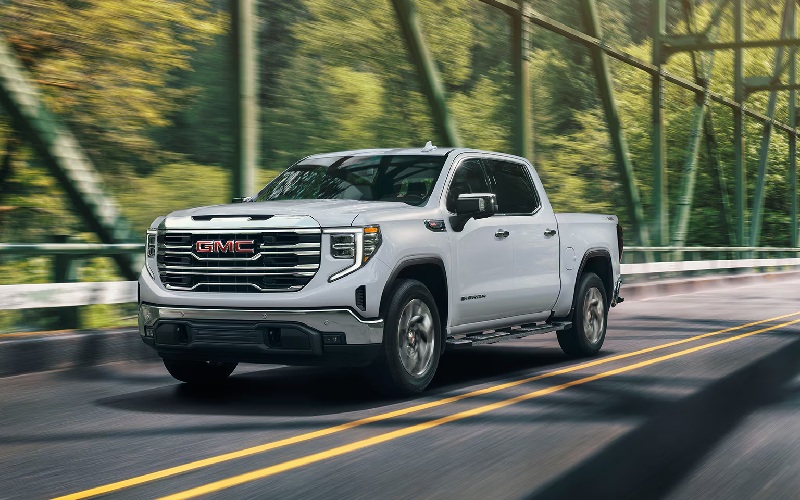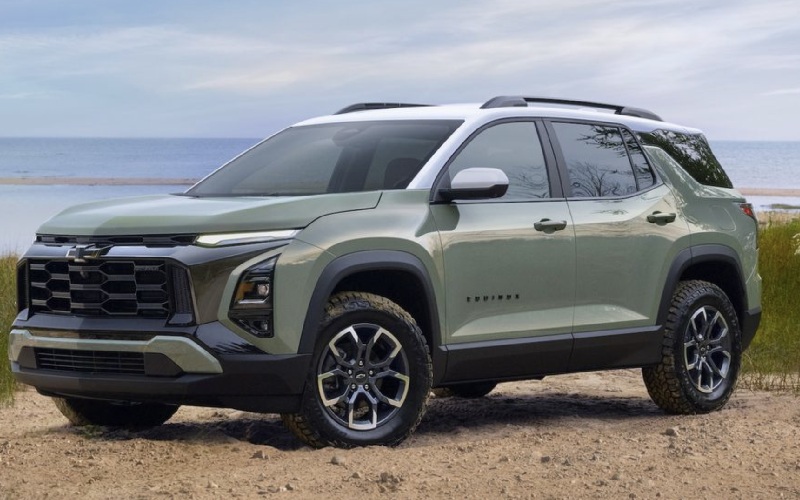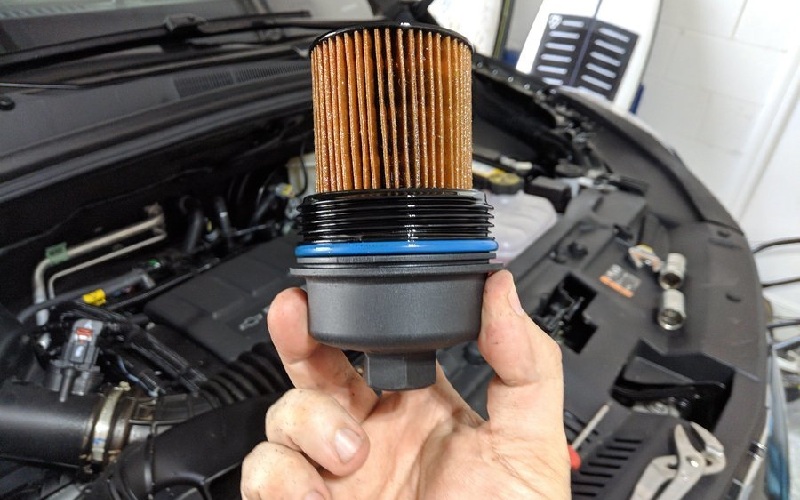Does the Chevy Equinox EV Need or Use Oil? Maintenance Tips
The Chevrolet Equinox EV represents a significant departure from its gasoline-powered counterpart in terms of powertrain design and maintenance requirements. This all-electric SUV operates fundamentally differently from traditional internal combustion engine vehicles, with profound implications for its fluid requirements and maintenance schedule. Understanding these differences helps owners maximize performance and minimize unnecessary service costs while […]
The Chevrolet Equinox EV represents a significant departure from its gasoline-powered counterpart in terms of powertrain design and maintenance requirements. This all-electric SUV operates fundamentally differently from traditional internal combustion engine vehicles, with profound implications for its fluid requirements and maintenance schedule. Understanding these differences helps owners maximize performance and minimize unnecessary service costs while ensuring their vehicle remains in optimal condition throughout its lifespan.

Electric Powertrain Architecture
The Chevrolet Equinox EV features a fully electric powertrain that eliminates the traditional internal combustion engine entirely. Instead of pistons, valves, and combustion chambers that require oil lubrication, the Equinox EV utilizes an electric drive unit containing an electric motor and single-speed transmission. This revolutionary design fundamentally changes the vehicle’s maintenance needs.
At the heart of the system lies a permanent magnet electric motor that converts electrical energy from the battery into mechanical energy to drive the wheels. The base Equinox EV models feature a single-motor front-wheel-drive configuration, while higher trims offer dual-motor all-wheel-drive configurations. These motors operate with significantly fewer moving parts than conventional engines—no pistons, connecting rods, crankshafts, or valves that would typically require oil lubrication.
The Equinox EV Ultium battery platform serves as the energy source, replacing the traditional fuel system. This advanced battery system consists of modular cells arranged in a protective structure beneath the vehicle’s floor. The battery capacity ranges from approximately 50 kWh to 85 kWh, depending on the specific trim level, providing a driving range between 400 km and 530 km on a full charge.
Power delivery occurs through a single-speed reduction gear transmission rather than the multi-speed transmissions found in conventional vehicles. This simplified transmission design further reduces the number of moving components and associated maintenance requirements.
Traditional Engine Oil: Not Required
The Chevrolet Equinox EV does not require traditional engine oil. Engine oil serves critical functions in internal combustion engines, including lubricating moving parts, cooling internal components, cleaning engine internals, and sealing combustion chambers. Since the Equinox EV has no internal combustion engine, these functions become irrelevant.
This represents one of the most significant maintenance advantages of electric vehicles like the Equinox EV. Owners will never need to:
- Schedule regular oil changes
- Replace oil filters
- Check oil levels
- Worry about oil leaks or consumption
- Dispose of used motor oil
Eliminating engine oil changes not only reduces maintenance costs but also represents an environmental benefit by reducing waste oil that would otherwise require proper disposal. This aspect aligns with the overall environmental ethos of electric vehicles.
Lubricants and Fluids the Equinox EV Does Require
While the Equinox EV doesn’t need engine oil, it does utilize several specialized fluids to ensure optimal operation and longevity:
- Reduction Gear Fluid: The electric drive unit contains a reduction gear that transfers power from the electric motor to the wheels. This component requires a specialized transmission fluid designed for electric vehicles. Unlike conventional transmission fluid, which requires periodic replacement, the reduction gear fluid in the Equinox EV is designed to last the lifetime of the vehicle under normal driving conditions, with no scheduled replacement.
- Brake Fluid: The Equinox EV uses a traditional hydraulic braking system alongside its regenerative braking capability. The vehicle requires DOT 4 brake fluid, which should be inspected every 24 months and replaced as needed. Moisture contamination of brake fluid can reduce braking performance and cause component corrosion.
- Battery Cooling System Fluid: The Equinox EV battery management system includes a sophisticated liquid-cooling circuit that maintains optimal battery temperature. This system uses a specialized coolant that requires periodic inspection but generally has a long service interval of 8-10 years or approximately 240,000 kilometers.
- Thermal Management System Fluid: A separate cooling loop manages temperature for the electric motor and power electronics. This system uses a different formulation of coolant that, like the battery cooling system, requires minimal maintenance with inspection intervals typically around 8-10 years.
- Windshield Washer Fluid: This is the fluid owners will refill most frequently. The reservoir capacity is similar to conventional vehicles, and the same formulations can be used based on seasonal requirements.
- Air Conditioning Refrigerant: The Equinox EV uses an electric compressor for its air conditioning system that requires the same type of refrigerant as modern conventional vehicles, typically R-1234yf.
Maintenance Schedule Differences
The Equinox EV maintenance schedule differs significantly from its gasoline counterparts:
Frequent Maintenance Tasks Eliminated:
- Oil changes (typically required every 5,000-10,000 km in combustion vehicles)
- Oil filter replacements
- Spark plug replacements
- Fuel filter services
- Air filter replacements (for engine air intake)
- Exhaust system inspections
- Timing belt/chain services
Retained Maintenance Requirements:
- Tire rotation (recommended every 12,000 km)
- Cabin air filter replacement (typically every 24,000 km)
- Brake fluid inspection (every 24 months)
- Brake pad and rotor inspections (though wear is typically reduced due to regenerative braking)
- Coolant system inspections (at longer intervals than conventional vehicles)
- 12-volt auxiliary battery checks (although this battery experiences less strain than in conventional vehicles)
Unique EV Maintenance Items:
- Battery health checks (performed electronically during dealer service visits)
- High-voltage system inspections
- Electric drive unit checks
- Charging port cleanliness and integrity inspection
The overall maintenance schedule for the Equinox EV calls for fewer service visits with longer intervals between required maintenance procedures. The vehicle’s onboard diagnostic system monitors critical components and will alert the driver when specific services are required.
Long-term Reliability Implications
The absence of engine oil and reduction in moving parts contributes to potential reliability advantages for the Equinox EV:
- Reduced Mechanical Complexity: With fewer moving parts, there are simply fewer components that can fail. The elimination of the combustion engine, multi-speed transmission, fuel system, and exhaust system removes many traditional points of failure.
- Lower Operating Temperatures: Electric motors generate less heat than combustion engines, reducing thermal stress on components. The advanced cooling systems maintain optimal operating temperatures for the battery and electric motors, potentially extending component lifespan.
- Regenerative Braking Benefits: The Equinox EV regenerative braking system reduces wear on mechanical brake components by using the electric motor to slow the vehicle while simultaneously recharging the battery. This feature significantly extends brake pad and rotor life compared to conventional vehicles.
- Battery Longevity Considerations: While the Equinox EV eliminates many maintenance concerns, the battery system introduces new considerations. The lithium-ion battery is designed for long-term durability, with manufacturers typically providing 8-year/160,000 km warranties on battery components. Proper charging habits and avoiding extreme temperature exposure can help maximize battery performance and longevity.
Keep Your Chevy Equinox EV in Optimal Condition
The Chevrolet Equinox EV represents a fundamental shift in vehicle ownership and maintenance requirements. The elimination of traditional engine oil changes and numerous related maintenance items offers owners significant convenience and potential cost savings over the vehicle’s lifespan. While new considerations around battery care and high-voltage systems emerge, the overall maintenance burden is substantially reduced. This simplified maintenance profile, combined with the performance and environmental benefits of electric propulsion, showcases why vehicles like the Equinox EV are transforming the automotive landscape.
5 Equinox EV Facts
- The Chevrolet Equinox EV electric motors contain permanent magnets that never need lubrication or maintenance, unlike internal combustion engines that require regular oil changes to prevent catastrophic failure.
- The reduction in maintenance requirements means an Equinox EV owner might visit a service center only 8-10 times over a 160,000 km period, compared to 16-32 visits for a comparable gasoline vehicle.
- While a typical internal combustion engine contains over 200 moving parts that require lubrication, the Equinox EV electric drive unit contains fewer than 20 moving components, dramatically reducing potential points of failure.
- The Equinox EV regenerative braking system can extend brake pad life to over 150,000 km under normal driving conditions, approximately two to three times longer than in conventional vehicles.
- The thermal management system in the Equinox EV operates in both directions—it can cool the battery during fast charging or performance driving, but also warm the battery in cold conditions to maintain optimal efficiency and range.
Will the Equinox EV last longer than gas models because it doesn’t need oil changes?
- While the elimination of oil changes removes one failure point, overall longevity depends on multiple factors. It does have inherent advantages due to its simpler mechanical design with fewer moving parts and reduced wear on brake components. However, battery degradation becomes the primary longevity consideration instead of engine wear. With proper care, an EV powertrain could potentially outlast a conventional engine, though battery capacity will gradually decrease over time.
Does the Equinox EV require any regular fluid checks?
- Yes, though significantly fewer than gasoline vehicles. Owners should periodically check brake fluid levels and windshield washer fluid. The cooling system fluids for the battery and drive unit require professional inspection at extended intervals (typically 8-10 years), but not regular owner maintenance. The reduction gear fluid is generally considered “lifetime” and doesn’t require regular checking under normal conditions.
How often does the Equinox EV need maintenance service?
- The official maintenance schedule recommends service visits approximately every 12,000 kilometers for tire rotations and general inspections. More comprehensive service occurs at 24,000-kilometer intervals, including cabin air filter replacement and more thorough component checks. This represents about half the service frequency of conventional vehicles.
Can I get the Equinox EV serviced at any Chevrolet dealer?
- Not all dealers are equipped for electric vehicle service. Chevrolet has designated EV-certified service centers with technicians specifically trained on high-voltage systems and the unique components of electric vehicles. These facilities also have the specialized diagnostic equipment required to properly evaluate electric drive systems.
What happens if I don’t perform the recommended maintenance on an Equinox EV?
- While the consequences are less immediate than skipping oil changes in a conventional vehicle, neglecting maintenance can still impact performance and longevity. Failing to rotate tires leads to uneven wear and premature replacement. Neglecting brake fluid checks could result in reduced braking performance. Battery cooling system issues might go undetected, potentially leading to reduced battery performance or premature degradation. Following the recommended maintenance schedule remains important, even with the simplified requirements.
Disclaimer: Content contained in this post is for informational purposes only and may include features and options from US or international models. Please contact the dealership for more information or to confirm vehicle, feature availability.



